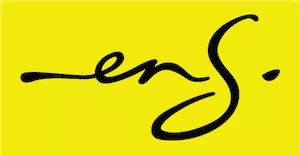- within Intellectual Property topic(s)
- in European Union
- in European Union
- in European Union
- with readers working within the Accounting & Consultancy, Retail & Leisure and Transport industries
- within International Law, Law Department Performance and Consumer Protection topic(s)
We take a look at a recent EU case that deals with sound marks, a type of trade mark that is still regarded as being a bit unusual, the case in question is Berliner Verkehrsbetriebe (BVG) v European Union Intellectual Property Office.
The trade mark application
On 15 March 2023 a German company, Berliner Verkehrsbetriebe ("BVG"), applied to register a sound mark at the European Union Intellectual Property Office ("EUIPO"). The trade mark sought to be registered comprises a melody that can be accessed via this link: The trade mark application covered the following services in class 39:
'Transport; passenger transport; wrapping and packaging services; storage; arranging of transportation for travel tours'.
A refusal
The EUIPO examiner refused registration of the trade mark. The examiner relied on Article 7(1)(b) of Regulation (EU) 2017/1001 of the European Parliament. For the benefit of any reader who may not have looked at this article for some time, this is the article that deals with trade marks that are 'devoid of any distinctive character'.
Unsurprisingly, the refusal led to ...
An appeal
On 6 November 2023, BVG filed a notice of appeal against the EUIPO examiner's decision.
The decision of the Board of Appeal (BOA)
The BOA dealt with this matter diligently and systematically, and it made a number of findings. Here are some of the more important findings:
All trade marks are created equal: The BOA said that the criteria for assessing whether or not a sound mark is distinctive are exactly the same as those for any other category of mark.
Short and banal: The BOA made the point that the trade mark that had been applied for here is short and banal. So short and banal in fact that it has 'no resonance or ability to be recognised by consumers as an indication of the commercial origin of the services which it covered'.
So just when is a trade mark too short? Well, the sound mark we're talking about is described in the BOA decision as 'a two-second sound sign, consisting of a simple sequence of four different perceptible sounds'. So if you're thinking of creating a sound mark, you should probably be thinking beyond two seconds!
But what's actually wrong with short? The BOA said that the trade mark applied for in this case is 'not able to convey as such a message which consumers [could] remember, given that it [would] simply be perceived as a functional sound element intended to draw the listener's attention to the subsequent announcement or to other aspects of the services covered'.
When is a trade mark banal? The BOA said that the trade mark applied for here was 'so short and banal that it [had] no resonance or recognisability which would allow the targeted consumers to regard it as an indication of origin and not merely as a functional element or an indication which does not convey a message'.
The trade mark was devoid of distinctive character: The BOA conceded that the mark applied for was different from other jingles that are used in the transport sector. Yet it felt that this was not enough – it said that the difference was 'not sufficient, on its own, to confer distinctive character on it'.
It's not unusual for consumers to identify by sound: The BOA went on to make the point that in certain product sectors it is not unusual for consumers to identify goods or services 'by means of a sound element'.
Things change:The BOA said that it is important to bear in mind that the customs in a particular field are not set in stone, they can change over time.
Jingles are everywhere:The BOA said that 'it is well known that operators in the transport sector increasingly use jingles, that is to say, short sound patterns, in order to create a sound identity recognisable by the public, an audio equivalent of the visual identity of a mark, for the goods and services associated with it.'
The end result
The BOA therefore confirmed the EUIPO's rejection of the sound .
Sound marks in South Africa
Sound marks are not uncommon in South Africa, with various advertising jingles and other distinctive sounds enjoying trade mark protection. Twentieth Century Fox, for instance, registered a mark sounding like fanfare, supported by a recording and musical notation. A less "musical" case is a sound mark registered by a company offering comparative pricing services, and described as follows:
"The sound may be described as bellowing/grunting vocalised by a hippopotamus, consisting of one long bellow/grunt, followed by a brief delay; the second two bellows/grunts in rapid succession, followed by a brief delay; the third two bellows/grunts in rapid succession, followed by a brief delay; ending with two successive short bellows/grunts."
Proof that even the noisy hippo can make the trade mark register!
The content of this article is intended to provide a general guide to the subject matter. Specialist advice should be sought about your specific circumstances.


